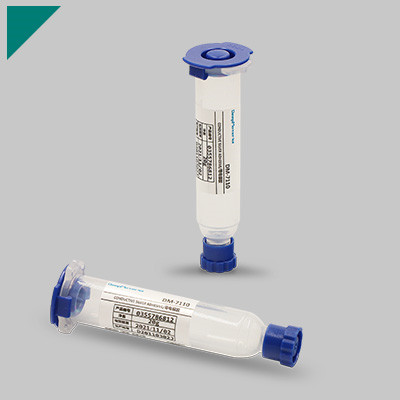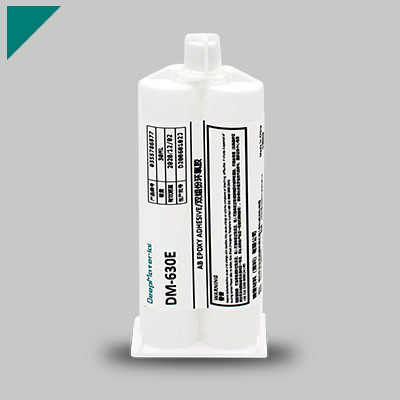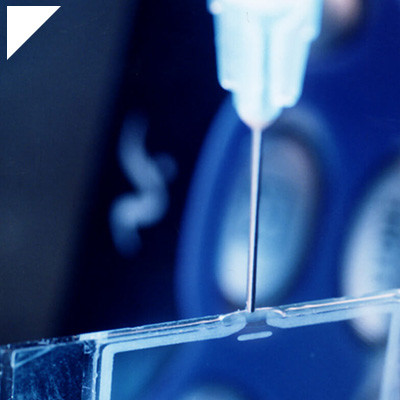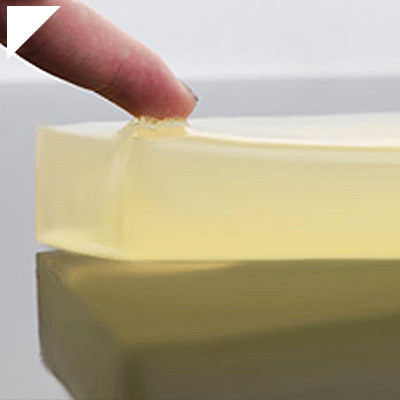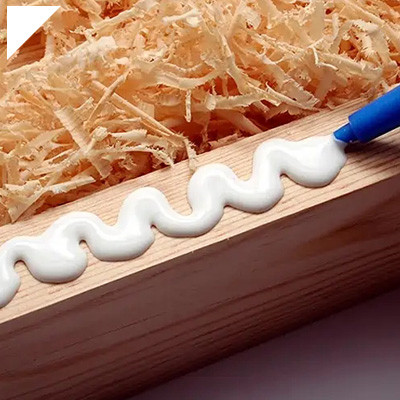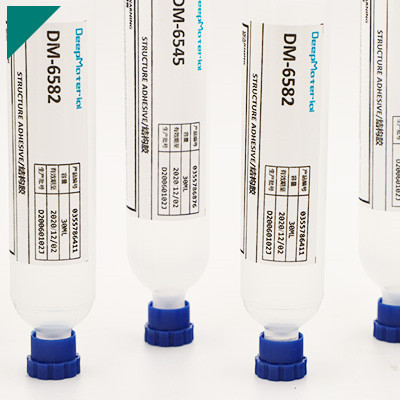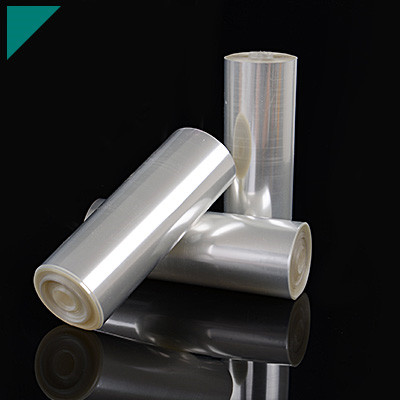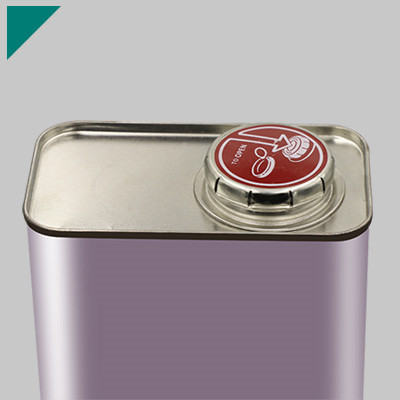- Home
- >
- Application
- >
- Smart Glasses Adhesive
Smart Glasses Adhesive

Smart Glasses Adhesive technology is an unassuming yet vital force driving the seamless fusion of modern innovation and wearable tech. Within the burgeoning realm of smart glasses, this unsung hero, the adhesive, quietly but significantly elevates their performance, reliability, and user experience. This exploration dives deep into the realm of Smart Glasses Adhesive, uncovering its crucial role, continual advancements, and far-reaching impact on the evolution of this transformative technology.
Table of Contents
ToggleHow does adhesive technology improve smart glasses design?
Smart glasses have revolutionized how we interact with technology, integrating functionality seamlessly into our daily lives. Behind their sleek design lies a crucial element that often goes unnoticed but plays a pivotal role: adhesive technology. The application of advanced adhesives has significantly contributed to enhancing the design and functionality of smart glasses in various ways.
Here’s a closer look at how adhesive technology improves smart glasses design:
- Seamless Integration:Adhesives allow for the seamless integration of components within the smart glasses, ensuring a sleek and compact design. They enable the bonding of delicate electronic elements, lenses, and frames without compromising the overall aesthetics.
- Durability and Structural Integrity:Advanced adhesives provide structural stability, reinforcing the joints and connections within the smart glasses. Enhancements to their design improve durability, ensuring they withstand daily wear and tear, vibrations, and environmental factors without compromising performance.
- Reduced Weight and Size:Using specialized adhesives helps reduce the overall weight of smart glasses by eliminating the need for bulky mechanical fasteners. This streamlined design enhances comfort for the wearer and contributes to a more stylish and less obtrusive appearance.
- Water and Dust Resistance:Adhesive technology enables the creation of seals that protect sensitive electronic components from moisture, dust, and other external elements. These protective measures enhance the longevity of smart glasses by preventing damage due to environmental exposure.
- Improved Optics Alignment:Precise alignment of optical components is critical for the performance of smart glasses. Adhesives with high bonding strength ensure accurate placement of lenses and sensors, optimizing the user experience by providing precise and consistent visuals.
- Customization and Flexibility:Adhesives offer flexibility in the manufacturing process, allowing customized designs to cater to specific functionalities or styles. This versatility enables manufacturers to innovate and meet diverse consumer preferences.
- Enhanced Comfort:Using specialized adhesives in smart glasses design helps create ergonomic and comfortable frames. These design features ensure that users can wear the glasses for extended periods without experiencing discomfort.
- Improved Production Efficiency:Adhesive technology streamlines the assembly process of smart glasses, reducing production time and costs. Manufacturers can achieve higher precision and consistency in the assembly, improving overall product quality.
What types of adhesives are commonly used in smart glasses manufacturing?
Smart glasses have emerged as versatile wearable technology, seamlessly blending innovation with everyday functionality. Behind their sophisticated design lies a crucial component that ensures their structural integrity and seamless assembly: adhesive technology. Various types of adhesives play a pivotal role in the manufacturing process of smart glasses, each offering unique properties suited for different applications.
Here are the commonly used adhesives in smart glasses manufacturing:
- UV-Curable Adhesives:These adhesives are famous for their rapid curing process when exposed to ultraviolet light. UV-curable adhesives are ideal for bonding glass components in smart glasses due to their high clarity and excellent adhesion properties.
- Cyanoacrylate (CA) Adhesives:CA adhesives, also known as superglue, can bond quickly, forming strong and rigid bonds. They are commonly used for bonding small components in smart glasses manufacturing due to their fast curing time and ability to bond various materials.
- Epoxy Resins:Epoxy adhesives offer exceptional bonding strength and chemical resistance, making them suitable for attaching different materials in smart glasses, such as metal frames or electronic components. They provide a durable and long-lasting bond.
- Silicone Adhesives:Silicone-based adhesives are known for their flexibility, thermal stability, and resistance to moisture and extreme temperatures. They create seals and protect sensitive electronic components in smart glasses.
- Acrylic Adhesives:Acrylic adhesives offer versatility and bond various materials such as plastics, glass, and metals. They balance strength and flexibility, making them suitable for bonding different parts of smart glasses.
- Thermal Interface Materials (TIMs):In smart glasses with augmented reality (AR) or virtual reality (VR) functionalities, thermal management is crucial. TIMs are specialized adhesives that conduct heat away from sensitive components, ensuring optimal performance and preventing overheating.
- Pressure-Sensitive Adhesives (PSAs): PSAs adhere to surfaces upon application of slight pressure. They are used for temporary bonding in smart glasses manufacturing processes, such as securing protective films or quick fixings during assembly.
The selection of adhesives in smart glasses manufacturing depends on factors like the materials being bonded, the desired properties (flexibility, transparency, or thermal conductivity), and the assembly processes involved. Manufacturers often combine different adhesive types strategically to achieve the desired performance and durability in smart glasses, ensuring a seamless and reliable end product that integrates technology seamlessly into our lives.
Can adhesives enhance the durability of smart glasses?
Smart glasses have revolutionized how we interact with technology, seamlessly integrating digital information into our daily lives. However, ensuring the durability of these sophisticated devices remains a challenge. One innovative solution gaining traction in the tech world is using specialized adhesives to enhance the longevity and robustness of smart glasses.
Advanced Adhesive Technology
- Adhesives specifically engineered for smart glasses offer a strong bond without compromising the device’s aesthetics or functionality.
- These adhesives are formulated to withstand various environmental conditions, including moisture, temperature changes, and physical stress, ensuring the longevity of the glasses.
Durability and Wearability
- Using smart glasses in diverse settings, from outdoor activities to professional environments, demands resilience against wear and tear. Adhesives play a crucial role in reinforcing the structural integrity of these devices.
- Smart glasses often consist of delicate electronic components. Specially designed adhesives create a protective barrier, shielding these components from damage caused by vibrations or impacts.
Improved Water and Dust Resistance
- Adhesives with water-resistant and dust-repelling properties offer added protection to the sensitive internal components of smart glasses, safeguarding them against potential damage from environmental elements.
- This enhanced resistance ensures that smart glasses maintain optimal functionality even in challenging conditions, increasing their usability and reliability.
Customizable Application
- The versatility of smart glasses requires adhesives that can be precisely applied to accommodate various designs and form factors. Advanced adhesives provide the flexibility needed for customization without compromising on durability.
- Manufacturers can tailor the adhesive application to different materials used in smart glasses, such as glass, plastic, or metal, ensuring a secure and lasting bond.
The Future of Smart Glasses
- As smart glasses continue to evolve, the role of adhesives in their construction will become increasingly pivotal. Innovations in adhesive technology will make these devices more durable, reliable, and adaptable to diverse user needs.
- Collaborations between adhesive manufacturers and competent glass developers will likely drive advancements in both fields, leading to more resilient and user-friendly devices.
Are there specific adhesives suitable for different smart glasses materials?
Smart glasses have transcended novelty to become integral tools in various industries, blending technology seamlessly into our daily lives. However, ensuring the durability and reliability of these devices demands meticulous attention to the materials used and the adhesives that bind them. Specific adhesives tailored to their unique properties are pivotal in ensuring a strong, lasting bond for different innovative glass materials.
Glass
- Smart glasses often incorporate glass components for their displays or lenses. Adhesives designed for glass substrates require excellent transparency, ensuring minimal interference with display clarity.
- UV-curable adhesives are commonly used for bonding glass, providing rapid curing and exceptional adhesion, which is crucial for glass-based smart glasses.
Plastic
- Many smart glasses utilize plastic elements due to their lightweight nature and versatility. Adhesives compatible with various types of plastics offer flexibility and resilience.
- Cyanoacrylate adhesives (super glue) effectively bond certain plastics, offering quick curing times and strong bonds. However, not all plastics are compatible, requiring specific formulations for optimal adhesion.
Metal
- Some smart glasses incorporate metal frames or components for durability and structural support. Adhesives for metal need to provide both strength and corrosion resistance.
- Epoxy adhesives are commonly used for bonding metals in smart glasses, offering high mechanical strength and excellent resistance to harsh environmental conditions.
Hybrid Materials
- Smart glasses often combine multiple materials for optimal functionality. Adhesives capable of bonding dissimilar materials are essential for ensuring the integrity of these complex structures.
- Acrylic-based or hybrid adhesives that adhere to glass, plastic, and metal materials provide the necessary versatility for bonding diverse, innovative glass components.
Custom Solutions
- Manufacturers and developers of smart glasses collaborate with adhesive specialists to tailor solutions for specific materials and design requirements. Customized adhesive formulations optimize bonding strength while considering flexibility, transparency, and environmental resilience.
- Advancements in adhesive technology continue to drive innovation, leading to adhesives specifically engineered to address the evolving needs of smart glasses made from cutting-edge materials.
How crucial is adhesive strength for smart glasses’ structural integrity?
In the world of wearable tech, smart glasses have emerged as a revolutionary innovation, seamlessly integrating technology into our daily lives. Behind their sleek design and advanced functionalities lies a crucial yet often overlooked element: adhesive strength. The adhesive that holds the various components together plays a pivotal role in ensuring these cutting-edge devices’ structural integrity and durability.

Here’s why adhesive strength is paramount for the stability and performance of smart glasses:
Structural Integrity
- Smart glasses comprise intricate components like lenses, frames, circuitry, and microprocessors. A robust adhesive is the backbone that binds these elements together, providing structural stability.
- Strong adhesive ensures that the components remain firmly attached, preventing potential damage caused by accidental drops or impacts.
Weight Distribution and Balance
- Adhesive strength contributes to an even distribution of weight across the glasses, ensuring comfort for the wearer.
- Properly applied adhesive helps maintain balance, preventing strain on specific areas of the device, which could lead to discomfort during extended use.
Environmental Resilience
- Smart glasses encounter various environmental conditions, from temperature changes to moisture exposure. A high-quality adhesive with superior resistance to environmental factors ensures the device’s longevity.
- Water-resistant or waterproof adhesives protect internal electronics, safeguarding against moisture-related damage.
Optics and Display Precision
- The alignment and precision of optics and display components significantly impact user experience. Adhesive with excellent bonding properties, it ensures precise positioning, enhancing visual clarity and performance.
- Even a slight misalignment due to inadequate adhesive strength can compromise the effectiveness of smart glasses.
Longevity and Reliability
- Adhesive quality directly influences the lifespan and reliability of smart glasses. A strong bond ensures that the device remains intact and operational for an extended period.
- Reliability is key for user trust and satisfaction, making adhesive strength a fundamental aspect of smart glasses’ design and manufacturing.
What considerations should manufacturers make when selecting adhesives for smart glasses?
As smart glasses continue to evolve and integrate into our daily lives, manufacturers must select the appropriate adhesive for these innovative devices. The adhesive is pivotal in ensuring durability, functionality, and user experience. Here are vital considerations for manufacturers delving into the realm of smart glasses adhesive selection:
Material Compatibility
- Substrate Variation:Smart glasses often comprise diverse materials like glass, plastics, metals, and electronic components. Manufacturers must choose adhesives compatible with these substrates to ensure strong and lasting bonds.
- Temperature Sensitivity:Given the electronics involved, adhesives must withstand varying temperatures without compromising performance or causing material degradation.
Optical Clarity and Transparency
- Vision Enhancement:Clarity is paramount for smart glasses, impacting user experience and functionality. Adhesives must maintain optical transparency to avoid obstructing the wearer’s vision or interfering with display elements.
- Anti-Reflective Properties:Adhesives should possess anti-reflective features to reduce glare or reflections that could impede visibility.
Flexibility and Durability
- Bendability and Flexibility:Smart glasses often have curved surfaces or flexible components. Adhesives must retain flexibility to accommodate these design elements without compromising bond strength.
- Durability Against Wear:Adhesives should endure frequent use, environmental factors, and potential impacts without deteriorating or losing adhesion.
Manufacturing Process
- Curing Time and Process:Manufacturers must consider adhesives’ curing time and applicability within their production processes to ensure efficiency without compromising quality.
- Adhesive Application Method:Depending on the manufacturing process, choosing adhesives that align with the preferred application method (e.g., dispensing, film, or tape) is crucial.
Environmental and Safety Considerations
- Chemical Composition:Adhesives should meet safety standards and regulatory requirements, ensuring they are non-toxic and environmentally friendly.
- Resistance to Environmental Factors:Smart glasses often accompany users in various environments. Resisting moisture, dust, and other environmental factors is essential for adhesives to maintain their performance.
Serviceability and Repairability
- Ease of Reparation:Selecting adhesives that allow for component replacement or repair without damaging other parts is vital for prolonging the lifespan of smart glasses.
How do adhesives contribute to the waterproofing and dustproofing of smart glasses?
Smart glasses have revolutionized how we interact with technology, integrating seamlessly into our daily lives. Behind their sleek frames and high-tech features lies a crucial element often overlooked: adhesives. These unassuming substances are pivotal in ensuring that smart glasses remain waterproof and dustproof, enhancing their durability and performance.
The Role of Adhesives in Waterproofing and Dustproofing Smart Glasses
- Sealing Vulnerable Points:Adhesives create a tight seal around sensitive components like microchips, sensors, and circuitry within smart glasses, preventing water or dust infiltration.
- Protecting Against Moisture:Specialized adhesives form a barrier that repels moisture, safeguarding the internal electronics from damage caused by water exposure.
- Enhancing Structural Integrity:Adhesives reinforce the structural integrity of smart glasses, bonding various parts together securely to create a unified, robust device.
- Shielding Against Dust:The adhesive layer acts as a shield, blocking fine dust particles from settling on delicate electronic components, thus minimizing potential malfunctions.
Types of Adhesives Used for Waterproofing and dust proofing
- Silicone Adhesives:Renowned for their water-resistant properties, silicone adhesives create a resilient barrier against moisture and dust while remaining flexible, ideal for wearable devices.
- UV-Curable Adhesives:When exposed to ultraviolet light, these adhesives form a durable and waterproof seal perfect for sealing tiny gaps and preventing water ingress by rapidly solidifying.
- Epoxy Resins:Known for their exceptional bonding strength, they are used to firmly affix components in place while providing resistance against water and dust intrusion.
- Acrylic Adhesives:Acrylic adhesives effectively seal joints and edges, enhancing the overall protection of smart glasses due to their high adhesion strength and resistance to environmental factors.
Benefits of Adhesive-Based Waterproofing and dust proofing
- Longevity:Adhesive solutions significantly extend the lifespan of smart glasses by shielding sensitive parts from potentially damaging elements like water and dust.
- Improved Reliability:By minimizing the risk of water damage or dust interference, adhesives contribute to smart glasses’ consistent and reliable performance.
- Enhanced User Experience:Users can confidently wear smart glasses in various environments, including outdoors or in inclement weather, without worrying about potential damage.
Are there any advancements in adhesive technology specifically tailored for smart glasses?
In the ever-evolving landscape of wearable technology, smart glasses have emerged as a revolutionary device, blending style with cutting-edge functionality. Behind the sleek designs and advanced features lies a crucial element that ensures the seamless integration of these devices into our daily lives smart glasses adhesive. Recent advancements in adhesive technology have paved the way for enhanced durability, comfort, and overall performance in smart glasses.
Here are the notable advancements in adhesive technology for smart glasses:
- Nano Adhesives:Manufacturers have introduced nano adhesives specifically engineered for smart glasses. These adhesives operate at a microscopic level, providing stronger bonding capabilities while maintaining a thin and lightweight profile. They ensure a secure attachment of various components without adding unnecessary bulk.
- Flexible Adhesives:Smart glasses often feature flexible and curved surfaces. Advanced adhesives offer increased flexibility, allowing seamless bonding even on curved or irregularly shaped areas. This flexibility ensures a snug fit without compromising the device’s design or comfort.
- Enhanced Durability:Adhesive technology has seen significant improvements in durability. Adhesives resist environmental factors like moisture, heat, and dust. This enhancement in durability ensures the longevity of smart glasses, reducing the risk of detachment or damage in various conditions.
- UV and Temperature Resistance:Adhesives tailored for smart glasses boast improved resistance to UV rays and extreme temperatures. This feature prevents adhesive degradation over time, maintaining the integrity of the bonds even when exposed to harsh environmental elements.
- Adjustable Adhesives:Some advancements allow for adjustable adhesion strength. This adaptability enables easy repairs or modifications without compromising the structural integrity of the smart glasses. Users can make alterations or replacements without damaging the device.
- Biocompatible Adhesives:Considering prolonged wear, biocompatible adhesives have gained traction. These adhesives are hypoallergenic and skin-friendly, ensuring comfort for users wearing smart glasses for extended periods without causing skin irritation or allergic reactions.
- Optical Clarity:Adhesive technology has advanced to maintain visual clarity. Maintaining this characteristic is crucial for smart glasses, ensuring that the adhesives do not interfere with the user’s field of vision or the functionality of display elements.
Can adhesives improve the comfort and wearability of smart glasses?
As technology continues to integrate seamlessly into our daily lives, smart glasses have emerged as a promising innovation. These futuristic eyewear devices offer a plethora of functionalities, from augmented reality experiences to hands-free communication. However, their widespread adoption has been hindered by comfort and wearability issues. Could the solution lie in smart glasses adhesive?
Key Points
- Improved Fit and Stability:Smart glasses adhesive can enhance the fit of these devices, ensuring a snug and secure placement on the wearer’s face. Using specialized adhesives designed for smart glasses, users can avoid constant adjustments and discomfort caused by glasses slipping or feeling loose.
- Customized Comfort:Adhesives offer the possibility of customized comfort. Different users have varying facial structures and preferences, and adhesive solutions can cater to these differences. Whether it’s a gentle adhesive for sensitive skin or adjustable adhesives for a personalized fit, the comfort level can be significantly enhanced.
- Reduced Weight and Bulkiness:Traditional smart glasses often come with added weight or bulky frames, leading to strain on the nose or ears during prolonged use. Smart glasses adhesive can distribute weight evenly across the face, reducing pressure points and discomfort.
- Enhanced Durability:Adhesives contribute to comfort and reinforce the structural integrity of smart glasses. They can provide an additional layer of support, minimizing the risk of accidental falls or damage to the device.
- Seamless Integration:Advanced adhesives allow for a seamless integration of technology with the wearer’s lifestyle. Smart glasses become more conducive to everyday activities, whether for work, fitness, or leisure, by ensuring a comfortable and secure fit.
Potential Challenges and Considerations
- Skin Sensitivity:Some users may have allergies or skin sensitivities to certain adhesives. Manufacturers need to prioritize hypoallergenic materials to cater to a broader audience.
- Adhesive Longevity:Ensuring the adhesive maintains its strength and durability over time is crucial. Continuous research and development are necessary to create long-lasting adhesive solutions.
- Regulatory Standards:Adhesive materials used in smart glasses should comply with safety and regulatory standards to guarantee user well-being.
Are there environmental implications associated with the adhesives used in smart glasses production?
In the ever-evolving landscape of wearable technology, smart glasses have emerged as a cutting-edge innovation, promising convenience and connectivity. However, amid the excitement surrounding their functionalities, a critical aspect often overlooked is the environmental impact of their production, specifically concerning the adhesives used in their assembly.

Understanding the Role of Adhesives in Smart Glasses Production
- Essential Component:Adhesives are the binding agent in assembling various parts of smart glasses, ensuring durability and functionality.
- Diverse Applications:They are utilized in attaching components like lenses, frames, circuitry, and electronic modules, contributing to the structural integrity of the device.
Environmental Implications
- Chemical Composition:Many adhesives contain compounds that could be detrimental to the environment, such as volatile organic compounds (VOCs) or substances with high toxicity levels.
- Manufacturing Processes:The production of adhesives often involves energy-intensive processes and non-renewable resources, contributing to carbon emissions and resource depletion.
- Waste and Disposal:Improper disposal of smart glasses or their components, including adhesives, can result in environmental pollution and potential harm to ecosystems.
Mitigating Environmental Impact
- Alternative Materials:Exploring eco-friendly adhesive alternatives derived from natural sources or utilizing biodegradable compounds could significantly reduce environmental harm.
- Improved Manufacturing Techniques:Implementing more sustainable production methods, such as reducing energy consumption or utilizing recyclable materials, can minimize the ecological footprint.
- Recycling Initiatives:Developing strategies for efficiently extracting and recycling materials from smart glasses, including adhesives, could mitigate waste and environmental impact.
What role does adhesive technology play in the repairability of smart glasses?
Smart glasses have revolutionized how we interact with technology, blending functionality seamlessly into our daily lives. However, when these technological marvels encounter wear and tear, adhesive technology becomes paramount in their repairability. Let’s delve into the significance of smart glasses adhesive technology in their maintenance and repair:
Precision Application
- Adhesive technology offers precise application methods, enabling targeted repairs on delicate, innovative glass components.
- The controlled adhesive dispensing ensures minimal mess and maximum accuracy during repair processes.
Component Stability
- Adhesives are crucial in stabilizing and securing fragile components within smart glasses, such as miniature circuitry and lenses.
- They provide a strong bond that prevents dislodgment or misalignment of essential parts, maintaining the device’s functionality.
Seamless Aesthetics
- Advanced adhesive formulations facilitate nearly invisible repairs, preserving the sleek appearance of smart glasses.
- Optically clear adhesives ensure that repaired areas do not obstruct or affect the user’s visual experience.
Durability and Longevity
- High-performance adhesives reinforce the structural integrity of smart glasses, prolonging their lifespan post-repair.
- These adhesives are often engineered to withstand environmental factors like moisture, temperature changes, and physical stress.
User-Friendly Repairs
- Adhesive technologies designed for smart glass repairs often use user-friendly application methods, simplifying DIY fixes.
- Clear instructions and easy-to-use applicators empower users to perform minor repairs, reducing the need for professional intervention.
Enhanced Functionality
- Adhesive solutions optimized for smart glasses aid in restoring full functionality by securely reattaching or reinforcing components.
- They ensure that repaired devices perform at their best, maintaining the intended user experience.
Future Innovations
- Ongoing advancements in adhesive technology continue to enhance the repairability of smart glasses.
- Innovations aim to develop stronger, more durable, and more accessible adhesives to remove, facilitating future repairs or upgrades.
Are there challenges faced in developing adhesives for smart glasses that need addressing?
Smart glasses have become an increasingly popular wearable tech, offering a range of functionalities from augmented reality experiences to hands-free communication. However, the development of adhesives for these innovative devices presents a set of challenges that demand attention and resolution.
Challenges Faced in Developing Adhesives for Smart Glasses
- Material Compatibility:Smart glasses comprise various materials like glass, plastics, metals, and electronic components, making it challenging to find adhesives that bond effectively without causing damage or interference.
- Durability and Longevity:Adhesives must withstand daily wear, environmental conditions, and temperature variations without compromising the stability of the glasses or losing their adhesive properties over time.
- Optical Clarity:Maintaining optical clarity is crucial for the user experience. Adhesives should not distort vision or interfere with the display, cameras, or sensors embedded in the glasses.
- Adhesive Strength:Ensuring a strong bond between different materials while allowing for repositioning during assembly and repairs is a complex requirement often faced in innovative glass adhesive development.
- Flexibility and Comfort:The adhesive should not create discomfort for the wearer. It must be flexible enough to adapt to the contours of the face while securely holding the device in place.
- Adhesive Application Process:Streamlining the application process of adhesives during manufacturing is essential to ensure consistency, efficiency, and quality control.
Addressing These Challenges
- Advanced Material Research:Investing in R&D to develop adhesives formulated explicitly for smart glasses can help overcome material compatibility issues while ensuring robust bonding.
- Testing and Certification:Rigorous testing protocols and certifications can ensure adhesives’ durability, safety, and reliability under various environmental and usage conditions.
- Collaborative Industry Efforts:Collaboration among material scientists, engineers, manufacturers, and eyewear designers can foster innovation and pool expertise to create superior adhesive solutions.
- Innovative Application Techniques:Exploring novel application methods, such as precision dispensing or automated bonding processes, can enhance the efficiency and accuracy of adhesive application.
- User-Centric Design:Prioritizing user comfort and experience in adhesive selection can lead to more comfortable, lightweight, and non-obtrusive bonding solutions.
How do adhesives impact the overall weight and balance of smart glasses?
Smart glasses have revolutionized how we interact with technology, merging functionality with style. Yet, the intricate balance between technology, comfort, and aesthetics relies significantly on an often-overlooked component: adhesive.
Impact on Weight
- Material Selection:Adhesives play a pivotal role in attaching various components of smart glasses, affecting their overall weight. Lighter adhesives, such as acrylic-based ones, contribute to a reduced load.
- Multiple Component Integration:As smart glasses incorporate diverse tech components, the cumulative weight of adhesives used to affix them adds to the overall heft. Opting for lighter adhesive materials becomes critical to mitigate this weight.
- Balance Optimization:Excessive adhesive application can create an imbalance in smart glasses, making them uncomfortable to wear. A careful adhesive application strategy is essential to maintain equilibrium.
Influence on Balance
- Center of Gravity:Adhesives impact the placement of components, affecting the glasses’ center of gravity. An uneven distribution due to adhesive usage can cause discomfort or strain on the wearer’s nose or ears.
- Comfort and Wearability:The right adhesive choice can enhance comfort by evenly distributing weight. Such a characteristic improves the glasses’ wearability, especially for prolonged use.
- Long-Term Durability:The adhesive’s quality determines how well the components stay intact. A balanced use of solid and durable adhesives prevents frequent repairs or replacements, maintaining the glasses’ equilibrium.
Advancements in Adhesive Technology
- Nano Adhesives:Innovations like nano adhesives offer superior bonding strength while maintaining minimal weight. Their application reduces the overall adhesive mass without compromising durability.
- Custom Adhesive Designs:Tailored adhesive designs for specific smart glass models allow precise application, optimizing weight distribution and balance.
- Environmentally Friendly Options:Manufacturers are leaning towards eco-friendly adhesives that have reduced environmental impact without compromising performance. These options maintain the delicate balance between functionality and sustainability.
Can adhesives be customized for specialized smart glasses functionalities?
Smart glasses have emerged as a transformative technology, revolutionizing how we interact with the world. Their functionality, comfort, and durability rely on various components, with adhesives playing a crucial role. While adhesives might seem mundane, their customization for specialized smart glasses functionalities is an innovation poised to redefine the user experience.
The Role of Adhesives in Smart Glasses
- Bonding Precision:Adhesives are fundamental in securely affixing delicate electronic components within smart glasses, ensuring seamless integration without compromising functionality.
- Durability Enhancement:Customized adhesives offer superior resistance to environmental factors like moisture, temperature changes, and physical stress, augmenting the glasses’ longevity.
- Optical Clarity:Specialized adhesives can maintain optical clarity, crucial for the lenses’ performance and ensuring high-quality visual output for users.
- Flexible Designs:Tailored adhesives create sleeker, lightweight designs while maintaining structural integrity, enhancing comfort and wearability.
Customization for Specialized Functionalities
- Augmented Reality (AR) Integration: Adhesives optimized for AR technology facilitate the seamless overlay of digital information onto the user’s field of view, enhancing the AR experience.
- Biometric Sensors Integration:Custom adhesives allow for integrating biometric sensors, such as heart rate monitors or temperature sensors, without compromising comfort or accuracy.
- Enhanced Audio Features:Adhesives tailored for superior sound transmission and noise cancellation support enhanced audio functionalities in smart glasses.
- Extended Battery Life:Innovative adhesives can aid in integrating larger or more efficient batteries within the frame, extending the glasses’ usage time.
Challenges and Future Prospects
- Material Compatibility:Ensuring compatibility between specialized adhesives and diverse smart glasses materials remains challenging, necessitating further research and development.
- Customization Precision:Fine-tuning adhesives for specific functionalities requires meticulous precision to maintain the overall integrity of the smart glasses.
- Advancements in Nanotechnology:Future advancements may unlock new adhesive possibilities, offering even more specialized functionalities.
Are there any safety concerns related to the adhesives used in smart glasses?
Smart glasses have rapidly emerged as a tech-savvy accessory, offering convenience and innovation. However, the adhesive used in these devices raises pertinent questions about safety. Let’s delve into the potential safety concerns associated with the adhesives utilized in smart glasses.
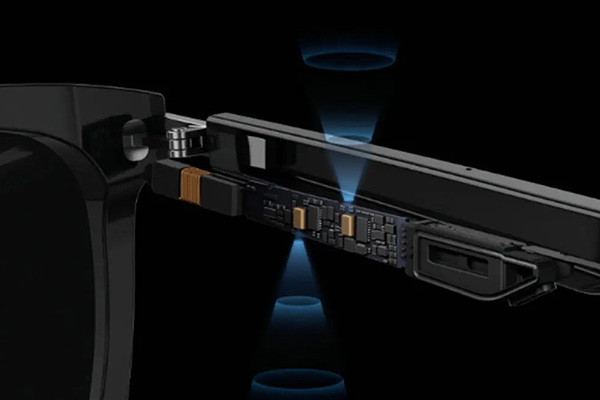
Adhesive Composition
- Smart glasses rely on various adhesives to assemble components, affix lenses and maintain structural integrity.
- Adhesives often contain chemicals like cyanoacrylate, epoxy resins, or UV-curable compounds.
Potential Safety Issues
- Skin Irritation:Certain adhesives can cause skin reactions upon contact, leading to irritation or allergic responses.
- Toxicity:Some adhesive compounds emit volatile organic compounds (VOCs), posing potential health risks upon prolonged exposure.
- Eye Irritation:Improper handling or contact with adhesives might cause eye irritation or damage if they come into direct contact with the eyes.
Manufacturing Standards and Regulations:
- Quality Control:Manufacturers must adhere to stringent quality control measures to ensure the safety of adhesives used in smart glasses.
- Compliance with Standards:Adhesive components should comply with safety regulations outlined by relevant authorities to minimize health risks.
Mitigating Safety Risks
- Material Selection:Prioritizing non-toxic, hypoallergenic adhesives can reduce the likelihood of adverse reactions.
- Proper Application:Ensuring precise adhesive application during assembly minimizes exposure risk.
- User Guidelines:Clear instructions regarding handling and potential risks should accompany smart glasses to guide users.
User Awareness and Precautions
- Allergy Testing:Users prone to skin sensitivities should conduct a patch test before prolonged smart glasses use.
- Ventilation: Adequate ventilation during manufacturing and assembly can reduce exposure to harmful fumes.
- Handling Instructions:Educating users on safe handling practices can prevent accidental adhesive exposure.
Future Developments
- Research and Innovation:Ongoing research aims to develop safer adhesive alternatives specifically designed for wearable tech like smart glasses.
- Improved Formulations:Innovations in adhesive formulations strive to minimize toxicity while maintaining robust bonding capabilities.
How do adhesives influence the cost of smart glasses production?
Smart glasses have emerged as a revolutionary technology, integrating functionality and style seamlessly into wearable devices. Behind their sleek exteriors lies a complex assembly process where every component, including adhesives, plays a critical role. Often overlooked but essential, adhesives have significantly influenced smart glasses’ production costs.
Here’s how adhesives shape the cost dynamics of smart glasses manufacturing:
Adhesive Selection
- Varied Types:Manufacturers have many adhesive options, each with distinct properties and costs UV-curable, pressure-sensitive, structural, etc.
- Performance vs. Cost:Balancing the adhesive’s performance requirements with cost implications is crucial. High-performance adhesives might hike up the overall production expense.
Assembly Process Efficiency
- Precision Application:Adhesives demand precise application to ensure smart glasses’ structural integrity and aesthetics, affecting assembly time and labor costs.
- Automation vs. Manual Labor:Automated application methods reduce human labor but might require an initial investment in machinery, impacting the overall production cost.
Material Compatibility
- Diverse Materials:Smart glasses integrate materials like glass, plastics, metals, and electronics. Adhesives must be compatible with these various substrates, which can affect costs due to specialized formulations.
- Compatibility Testing:Conducting compatibility tests between adhesives and materials adds a step in production, influencing both time and cost.
Durability and Longevity
- Longevity Concerns:Adhesives contribute to the durability and lifespan of smart glasses. Opting for cheaper adhesives that compromise longevity might increase maintenance or replacement costs over time.
Regulatory Compliance
- Adhesive Standards:Compliance with regulatory standards and certifications can affect adhesive selection, potentially impacting costs based on meeting specific requirements.
Economies of Scale
- Bulk Purchasing:Manufacturers benefit from economies of scale when purchasing adhesives in bulk. Negotiating favorable terms or discounts can positively impact the overall production cost.
Research and Development
- Innovations and Cost:Investing in R&D for new adhesive technologies might initially escalate production costs but could lead to cost-efficient and advanced solutions in the long run.
What trends can we expect in smart glasses adhesive technology in the near future?
Smart glasses have rapidly evolved from futuristic prototypes to practical, everyday accessories, offering augmented reality (AR) experiences and enhancing our interactions with the world. Among the essential components of these innovative devices, smart glasses adhesive technology plays a pivotal yet often overlooked role in ensuring functionality, comfort, and durability. Shortly, several trends are poised to shape the landscape of smart glasses adhesive technology:
Advanced Material Science
- Nano-adhesives:Expect the emergence of nano-scale adhesives designed for improved grip and flexibility without compromising weight or aesthetics.
- Bio-inspired adhesives: Innovations mimicking nature’s adhesive properties, such as gecko-inspired adhesives, to enhance bonding strength and adaptability.
Customization and Comfort
- Adjustable adhesives:Future smart glasses may incorporate adhesive systems that allow users to adjust fit and comfort according to their facial structure and preferences.
- Skin-friendly materials:Anticipate the development of hypoallergenic adhesives to prevent skin irritation and discomfort during prolonged use.
Durability and Longevity
- Water-resistant adhesives:With an eye on durability, manufacturers will likely introduce water-resistant adhesives to protect smart glasses from environmental elements.
- Enhanced adhesive lifespan:Advancements in adhesive technology will aim to extend the lifespan of bonding materials, ensuring the longevity and reliability of smart glasses.
Integration with AR Features
- Conductive adhesives:Expect innovations integrating conductive adhesives to facilitate seamless connectivity between different components within smart glasses, supporting AR functionalities.
- Transparent adhesives:Developing transparent adhesives to enable unobstructed views through smart glasses enhances the overall AR experience.
Sustainability Focus
- Eco-friendly adhesives:As sustainability gains prominence, the industry may pivot towards using eco-friendly materials for smart glass adhesive technology, reducing environmental impact.
- Recyclable adhesives:Innovations in recyclable adhesives could pave the way for more environmentally conscious production and disposal practices.
Are there any limitations to the application of adhesives in smart glasses manufacturing?
Integrating innovative technology into everyday accessories has revolutionized how we interact with the world. Smart glasses, in particular, have gained traction for their multifunctionality and sleek designs. However, the adhesive techniques utilized in their manufacturing process come with limitations that warrant exploration.
Here’s a closer look at the constraints and challenges associated with the application of adhesives in smart glasses manufacturing:
Precision vs. Durability
Adhesives are pivotal in bonding delicate components in smart glasses, demanding precision application. However, balancing precision with durability remains a challenge. Adhesives might struggle to maintain long-term cohesion, leading to potential malfunction or detachment of vital parts.
Environmental Factors
Smart glasses face various environmental conditions, from extreme temperatures to humidity. Adhesives used in their assembly must withstand these conditions without compromising functionality. Yet, achieving a universal adhesive solution that performs consistently across diverse environments remains a hurdle.
Compatibility with Materials
Smart glasses encompass an array of materials, from glass and plastic to metals and electronic components. Adhesives must be compatible with these diverse materials to ensure strong, lasting bonds. However, finding a glue that adheres effectively to all materials without causing damage or degradation can be challenging.
Miniaturization and Space Constraints
The compact design of smart glasses demands meticulous engineering, leaving minimal room for adhesive application. Adhesives should bond components without adding bulk or interfering with the device’s sleekness. Striking this balance between adhesive strength and minimal space utilization poses a significant challenge.
Optical Clarity and Visual Impairment
When misapplied, adhesives can cause visual impairment by affecting optical clarity or creating distortions. Maintaining transparency and clarity is crucial for user experience in smart glasses. Finding adhesives that don’t interfere with vision while ensuring robust bonding remains a technical challenge.
Research and Development
Advancements in adhesive technology are continuously evolving, aiming to address these limitations. However, the pace of R&D might only sometimes align with the rapid advancements in smart glasses technology, leading to temporary limitations in adhesive capabilities.
How important is adhesive compatibility with smart glasses electronic components?
Smart glasses have revolutionized how we interact with technology, seamlessly integrating electronic components into eyewear. However, amidst the sleek design and cutting-edge features lies a critical yet often overlooked component – the adhesive. The compatibility of adhesive used in assembling these glasses with their electronic components plays a pivotal role in their functionality and longevity. Here’s why it matters:
Precision and Durability
- Adhesive compatibility ensures a secure and precise attachment of electronic components onto the glass frames.
- Proper adhesion prevents displacement or damage to delicate electronic parts, enhancing their durability.
Electrical Insulation
- Compatible adhesives act as insulators, safeguarding electronic components from moisture, dust, and other environmental factors that could cause short circuits or malfunctions.
- They maintain the integrity of the electrical connections, which is crucial for the glasses’ performance.
Optical Clarity and Performance
- Adhesive compatibility affects the optical clarity of smart glasses. A mismatched adhesive could cause distortions or haze, impacting the user experience.
- Proper adhesion ensures uninterrupted functionality, allowing users to enjoy clear visuals and accurate data displays.
Comfort and Wearability
- A well-matched adhesive maintains smart glasses’ sleek design and lightweight nature, contributing to user comfort.
- Compatibility prevents uneven weight distribution or discomfort caused by adhesive-related issues.
Longevity and Reliability
- Adhesive compatibility directly influences the longevity and reliability of smart glasses.
- Properly bonded electronic components increase the overall lifespan of the device, reducing the chances of premature failures.
Manufacturing Efficiency
- Using compatible adhesives streamlines the manufacturing process, ensuring efficient assembly and reducing the risk of rework or errors.
- Compatibility minimizes production delays and costs associated with component detachment or malfunction.
Can adhesives impact the optical performance of smart glasses?
Smart glasses have swiftly emerged as a futuristic tech trend, blending functionality seamlessly into daily life. However, the backbone of these innovative devices often needs to be noticed the adhesive that connects the various components. The pivotal question arises: Can adhesives truly impact the optical performance of smart glasses?
Understanding the Role of Adhesives
- Adhesives serve as the binding agent for the multifaceted components within smart glasses, facilitating structural integrity and stability.
- They are crucial in securing delicate optical elements like lenses, displays, and sensors, ensuring their alignment and functionality.
Factors Influencing Optical Performance
- Index of Refraction:The adhesive’s refractive index is pivotal in light transmission through lenses and displays. Mismatched refractive indices between the adhesive and optical components can lead to distortions, reducing clarity and impacting visual performance.
- Transparency and Clarity:Adhesive transparency is paramount. Any impurities or cloudiness within the adhesive can hinder light passage, affecting the overall optical quality experienced by the user.
- Durability and Longevity:Adhesives must endure environmental stressors like temperature changes, moisture, and physical impacts without compromising the optical alignment or performance.
- Minimization of Light Scattering:Optimal adhesives should minimize light scattering at the interface between components, ensuring minimal loss of light and maximizing visual clarity.
Potential Solutions and Innovations
- Specialized Adhesive Formulations:Manufacturers are exploring adhesive formulations specifically designed for smart glasses, focusing on precise refractive indices and enhanced transparency to maintain optical excellence.
- Nanotechnology Advancements:Nano-adhesives offer promising solutions, leveraging nanoscale materials to achieve superior optical properties, such as reduced light scattering and improved durability.
- Adhesive Application Techniques:Innovations in application techniques aim to minimize adhesive thickness, reducing the risk of optical distortion while ensuring robust bonding.
CONCLUSION
In the realm of smart glasses, the significance of adhesive technology transcends its inconspicuous presence. It is the linchpin ensuring these futuristic wearables’ reliability, durability, and precision. Smart Glasses Adhesive has reshaped its landscape, promising a future of even greater sophistication and adaptability. As this adhesive innovation continues to push boundaries, its role in enhancing the capabilities and usability of smart glasses remains steadfast, heralding a promising era of technological symbiosis and user-centric design.
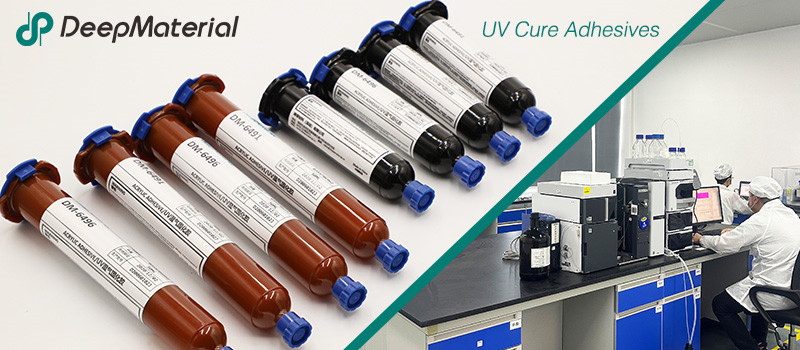
DeepMaterial
Based on the core technology of adhesives, DeepMaterial has developed adhesives for chip packaging and testing, circuit board level adhesives, and adhesives for electronic products. Based on adhesives, it has developed protective films, semiconductor fillers, and packaging materials for semiconductor wafer processing and chip packaging and testing. More…
UV Curing Adhesives
UV light cure have a number of benefits making them a popular choice among many product assembly and manufacturing applications. Many UV light cure adhesives can provide a nearly instantaneous bond to difficult substrates like glass and plastic. UV cure adhesives often require an accelerator or UV light for a bond to form.
Adhesive Blogs & News
The latest adhesive industry science and technology, Deepmaterial news, and market trends and forecasts.
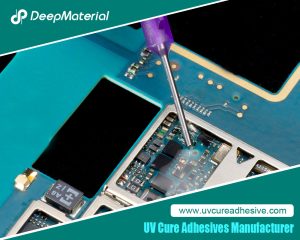
Technical Strategies for Balancing the Rapid Curing Property and Long Operating Time of UV Adhesives
Technical Strategies for Balancing the Rapid Curing Property and Long Operating Time of UV Adhesives UV adhesives have been widely used in many fields such as electronics, optics, and medicine due to their advantages of rapid curing, high bonding strength, and environmental protection. However, their rapid curing property also brings challenges in some application scenarios.
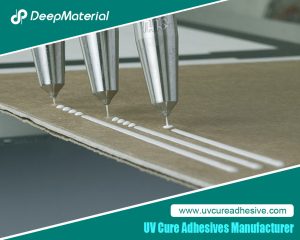
Biocompatibility of LED UV Glue Adhesive and Its Application Potential in Medical and Food Packaging Fields
Biocompatibility of LED UV Glue Adhesive and Its Application Potential in Medical and Food Packaging Fields LED UV glue adhesive has been widely applied in numerous fields due to its advantages such as rapid curing and easy operation. However, in fields with stringent safety requirements like medical and food packaging, its biocompatibility after curing
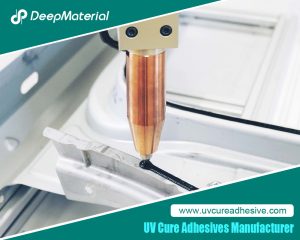
Exploring the Environmental Performance of UV Glue and Strategies for Optimizing Odor and VOC Content
Exploring the Environmental Performance of UV Glue and Strategies for Optimizing Odor and VOC Content UV glue, as an adhesive that achieves rapid curing through ultraviolet (UV) light irradiation, has been widely applied in numerous fields such as electronics, optics, healthcare, and automobiles, thanks to its advantages of fast curing speed, high bonding strength, and
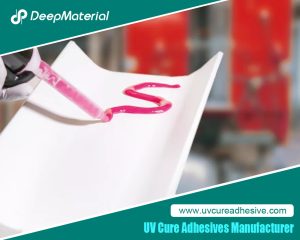
Compatibility Analysis and Countermeasures of LED UV Glue with Automated Production Equipment
Compatibility Analysis and Countermeasures of LED UV Glue with Automated Production Equipment LED UV glue has been widely used in modern manufacturing due to its advantages such as fast curing speed, high bonding strength, and environmental friendliness. However, in the automated production process, if there are problems with the adaptability between the glue and equipment

Influence of Viscosity and Thixotropy of Glue on the Quality of Glue Dots in the Dispensing Process and Solutions
Influence of Viscosity and Thixotropy of Glue on the Quality of Glue Dots in the Dispensing Process and Solutions The dispensing process is an important part of the application of LED UV glue adhesive, and the quality of this process directly affects the final performance of the product. The physical properties of the glue,
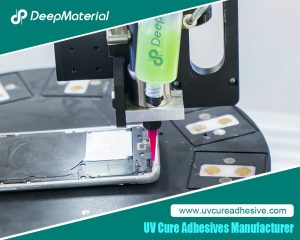
Aging Mechanism and Modification Strategies of LED UV Glue under Long-term Ultraviolet Irradiation
Aging Mechanism and Modification Strategies of LED UV Glue under Long-term Ultraviolet Irradiation LED UV glue, with its advantages of fast curing speed, high bonding strength, and environmental friendliness, has been widely used in fields such as optical device packaging, electronic assembly, and medical devices. However, in scenarios where it is exposed to ultraviolet environments

